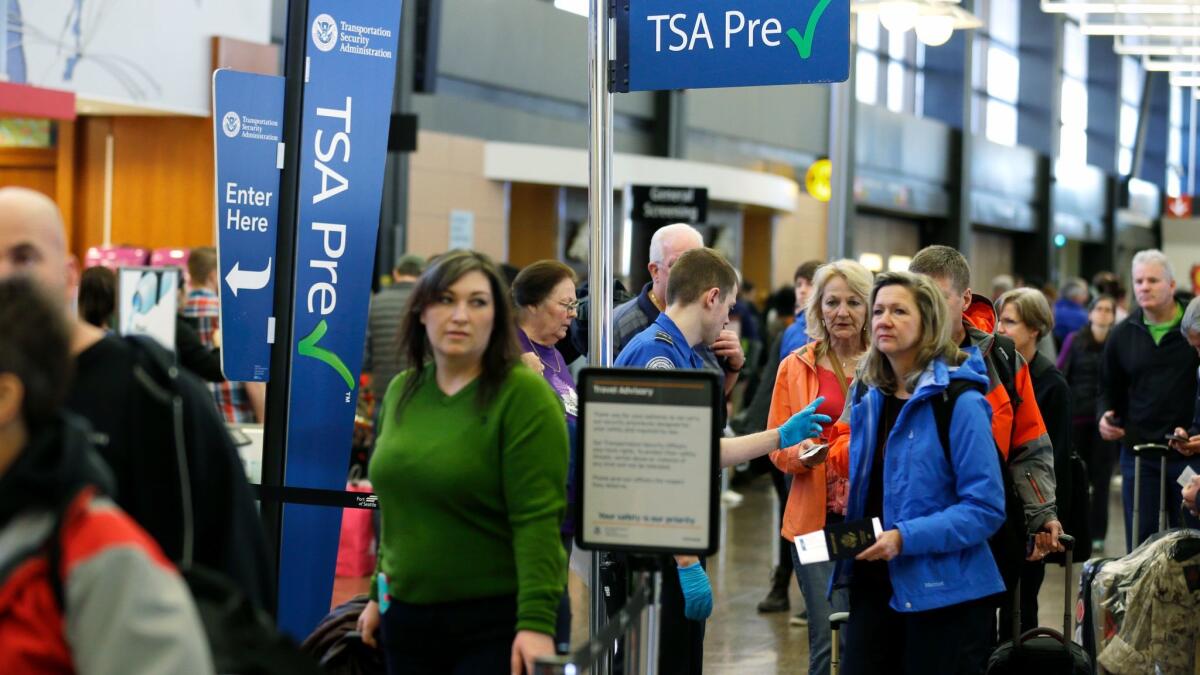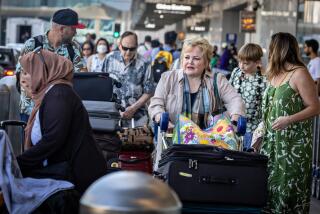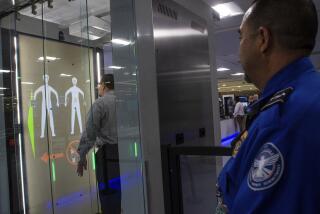TSA PreCheck program to speed security lines needs more workers doing background checks, report says

- Share via
The Transportation Security Administration’s push to enroll 25 million people in its expedited screening program has fallen short, mainly because the agency failed to assign enough workers to review applications, a federal report found.
The TSA has failed to keep pace to meet its goal for TSA PreCheck, the agency’s key program to get airport security lines moving faster, primarily because the agency didn’t anticipate how successful its marketing efforts would be and didn’t staff accordingly, according to a new report by the Office of Inspector General for the U.S. Department of Homeland Security.
The program launched in 2013 and has so far enrolled 5.6 million fliers. The TSA has set a goal of enrolling 25 million travelers by 2019.
TSA PreCheck is designed to pre-screen low-risk passengers, such as business travelers, to focus the TSA’s limited staffing on all other passengers. Travelers who are approved to be PreCheck members can use a special expedited lane at most of the nation’s airports.
To meet the goal of enrolling 25 million, the agency spent more than $3.7 million over the last three years on an advertising campaign, touting the benefits of the program. A five-year membership for TSA PreCheck costs $85.
Although the campaign more than tripled the applications for the program last year, the Office of Inspector General said the TSA had a backlog of applications because the agency didn’t employ enough staff to manually check applications that require extra review.
About 74% of applications for TSA PreCheck are approved through an automated background check that includes confirmation of a traveler’s citizenship status and criminal history, among other intelligence-related checks. But 26% of the applications require extra review because they include “potentially disqualifying information” and must be checked manually by workers at the TSA “adjudication center.”
The report found that the TSA had 27 positions set aside for the adjudication center, but vacancies and turnover in that department have been high.
“Therefore, the Adjudication Center could not fill vacancies quickly enough, and an attempt to address the application queue with [temporary workers from other departments] was not wholly successful,” the report said.
The report also criticized the way the TSA selects applications for review, suggesting the need for a more efficient, automated system.
The TSA responded to the report, saying it agrees with the Office of Inspector General’s assessment and plans to add 21 new workers to handle adjudication work.
To read more about the travel and tourism industries, follow @hugomartin on Twitter.
More to Read
Inside the business of entertainment
The Wide Shot brings you news, analysis and insights on everything from streaming wars to production — and what it all means for the future.
You may occasionally receive promotional content from the Los Angeles Times.











